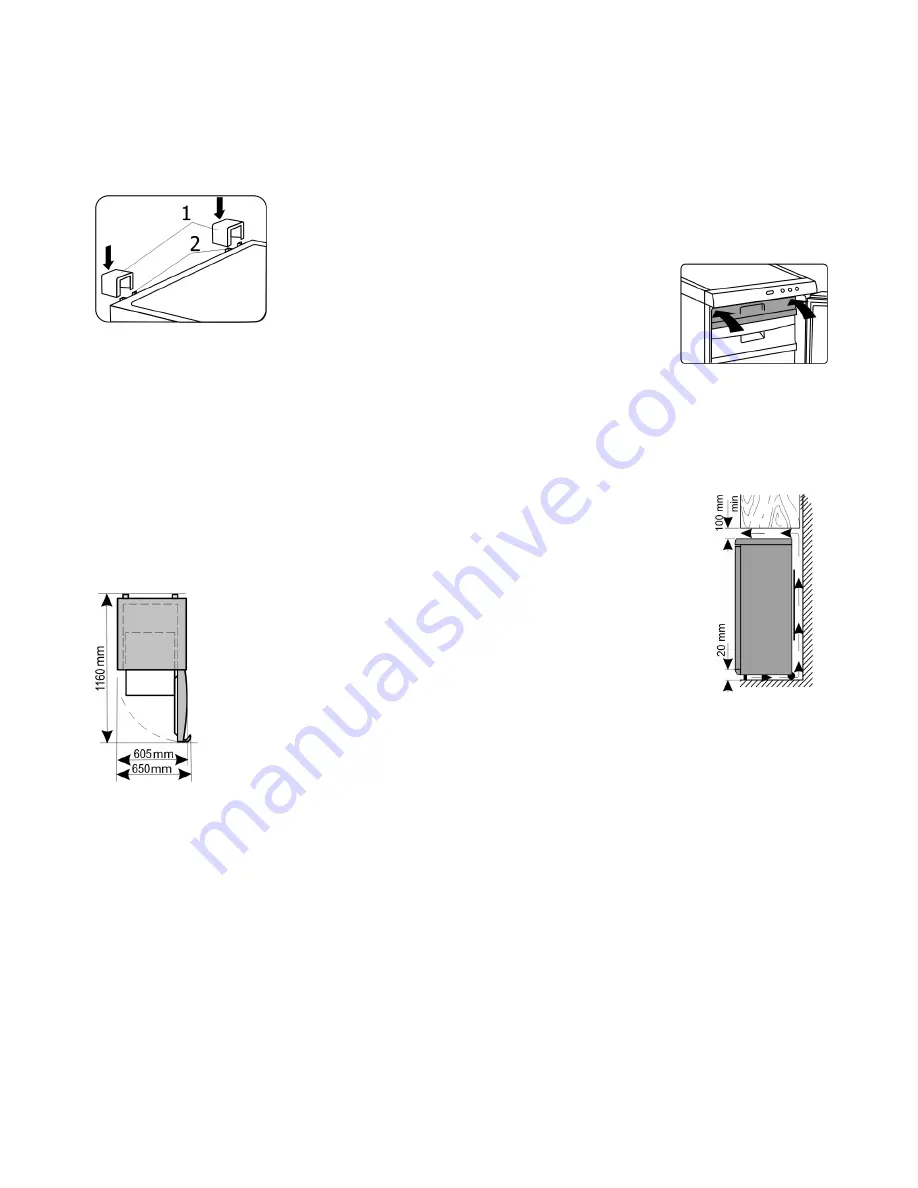
PREPARING THE APPLIANCE FOR OPERATION
! It is recommended to prepare the appliance for operation with a helper.
•
Remove package. Lift the appliance away from foamed polystyrene base.
Do not rise or push it
taking by handles. Handles may break.
Tear off adhesive tapes.
•
When positioning the appliance in chosen location, it will move more easily into position if you lift
the front a little and incline it backward, allowing it to roll on its casters.
•
Remove the support from the bottom cover. Tear away the red-coloured
adhesive tapes from the door trays – they are intended only for the
transport of the appliance.
•
Suitably dispose the packaging material.
◄
Take two supports from the bag and insert them
into the guides at the top back part of the appliance.
•
ATTENTION!
In order to fix the upper small door
when closing, the upper corners of the door till a click
►
POSITIONING.
VENTILATION
•
Place the appliance in a dry, well ventilated room.
•
ATTENTION!
The appliance should not be operated in an unheated room or porch. Place the
appliance away from heat sources such as kitchen stove/oven, radiators, or direct sunlight.
•
ATTENTION!
The appliance must not touch any pipes for heating, gas or water supply,
or any other electrical devices.
•
Do not cover the ventilation holes at the top of the appliances– it must be a good
air circulation body and any furniture that may be above it. If this requirement is
not followed, the appliance consumes more electrical energy and its compressor
may overheat
►
◄
Overall space required in use of the freezer.
If the
appliance is placed in a corner, a gap of at least 1 cm must be left
between the appliance body and the wall so that the freezer
compartment door can be opened enough to pull out the frozen
product drawer.
•
The appliance must stand on a level surface and must not touch
the wall. If necessary, regulate the height of the appliance by adjusting the
levelling feet: by turning them clockwise – the front of the appliance rises, by
turning them counter clockwise – it comes down. If the appliance is tilted slightly
backward – the doors will close by themselves.
TEMPERATURE REGULATION
!
Temperature set in the freezer by the manufacturer is
-18
0
C
The temperature in the appliance is controlled using the thermostat knob
5
(
fig. 1
) by turning it to
one side or the other. The temperature indication in digits is shown beside the thermostat knob. When
the appliance door is closed, the thermostat position is seen on the thermostat position indicator
3
(
fig. 1
). The temperature is regulated on the scale of five digits.
0
= Compressor is switched off.
WARNING! Electric current is not switched off.
1
= highest temperature (lowest cooling)
5
= lowest temperature (highest cooling)
!
Please set the desired temperature in the appliance according to your own requirements.
!
THE TEMPERATURE IN THE REFRIGERATOR COMPARTMENT MAY VARY DEPENDING ON AMBIENT
TEMPERATURE, THE AMOUNT OF FOODSTUFFS, THE TEMPERATURE OF THE FOODSTUFFS, AND
HOW OFTEN THE APPLIANCE DOOR IS OPENED AND CLOSED.
Therefore we recommend:
•
locate the appliance away from heat sources,
•
food placed in the appliance should not be warmer than the room temperature,



























